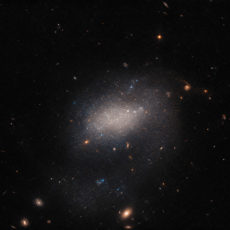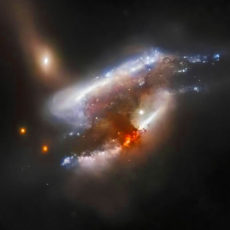
Astronomy fans rejoice! Hubble captured this stunning image of barred spiral galaxy NGC 2273, complete with its rarely seen multi-ring structure. It’s located some 95 million-light years from Earth in the constellation Lynx and measures 100,000 light-years across.

“At first glance, NGC 2273 looks to be a simple spiral galaxy, with two pinwheeling arms emerging from a central bar of stars and material that cuts through the galactic center,” Hubble astronomers noted. NGC 2273’s defining feature is its multi-ring morphology, with the inner ring being formed by two arcing structures near the galactic core, hugging the central bar tightly. Then the two outer pseudorings emerge where swirling spiral arms loop back, creating the illusion of closed circles through a trick of perspective. “Rings are created when a galaxy’s spiral arms appear to loop around to nearly close upon one another, combined with a trick of cosmic perspective,” explained Hubble astronomers.
- LEGO NASA Space Set - This adult LEGO set features the Space Shuttle Discovery and the Hubble Space Telescope from NASA’s 1990 STS-31 mission,...
- Solar System Exploration - Unlock the mysteries of our solar system with this engaging 2,354-piece project, packed with authentic details and...
- Shuttle Features Galore - The space shuttle model has an opening payload bay, retractable landing gear, opening cockpit, moving elevons, space arm,...
This Seyfert galaxy is estimated at 7.5 million solar masses, and has a black hole that drives an accretion disk radiating with such ferocity it could outshine the entire Milky Way. The galaxy’s infrared luminosity, clocking in at 10^10.25 solar luminosities, signals intense stellar activity. “NGC 2273 has a massive ‘star formation efficiency’ similar to that of starburst galaxies,” noted a 1991 study published in NASA/ADS.
Hubble’s Wide Field Camera 3, using five filters to capture visible and infrared light, produced this image showcasing NGC 2273’s multi-ring splendor in vivid color. “The color image was made from separate exposures taken in the visible and infrared regions of the spectrum,” NASA detailed.
Its relatively weak bar and lack of obvious galactic collisions suggest internal dynamics at play, though the exact mechanisms are still debated. “The morphology is atypical compared to most outer-ringed galaxies,” researchers noted.
















